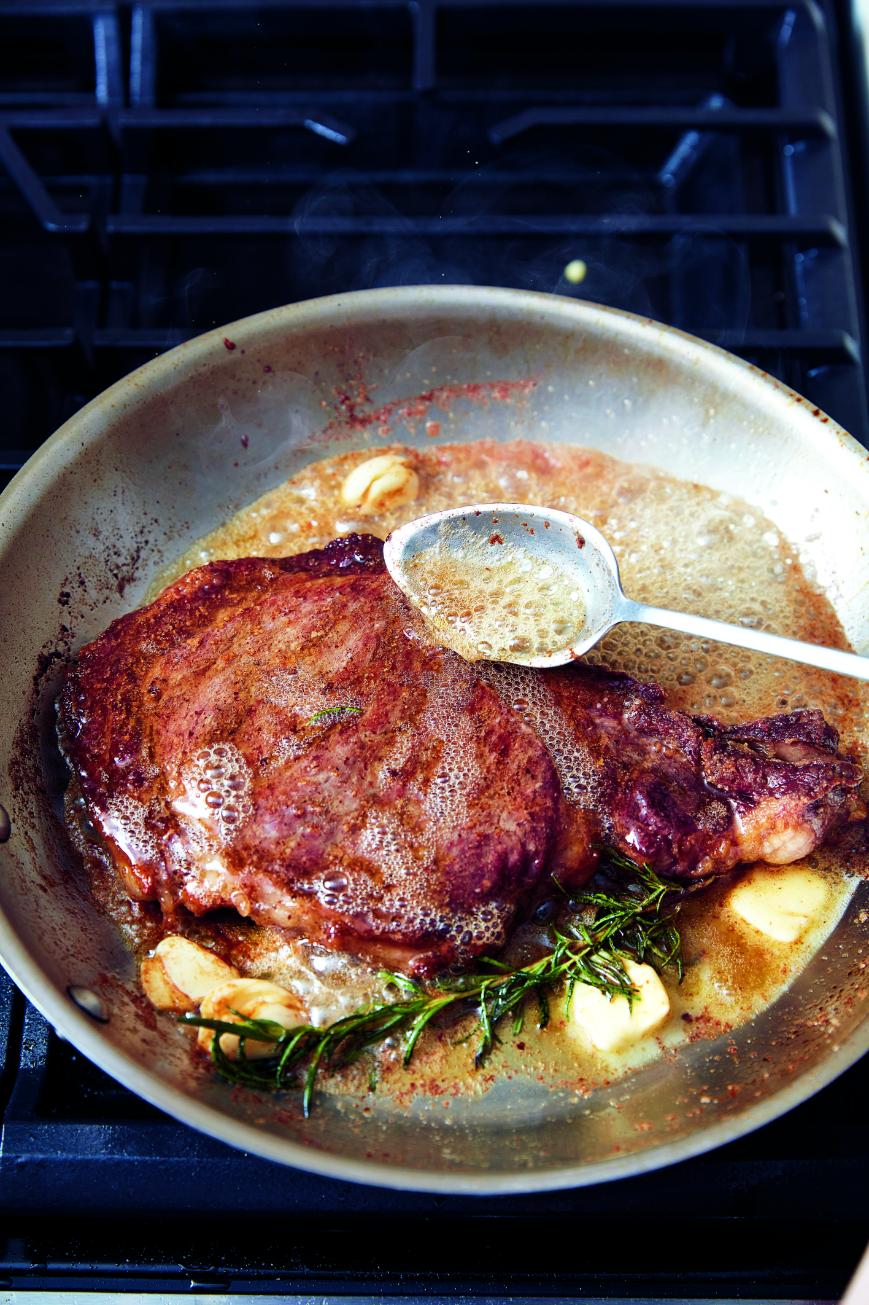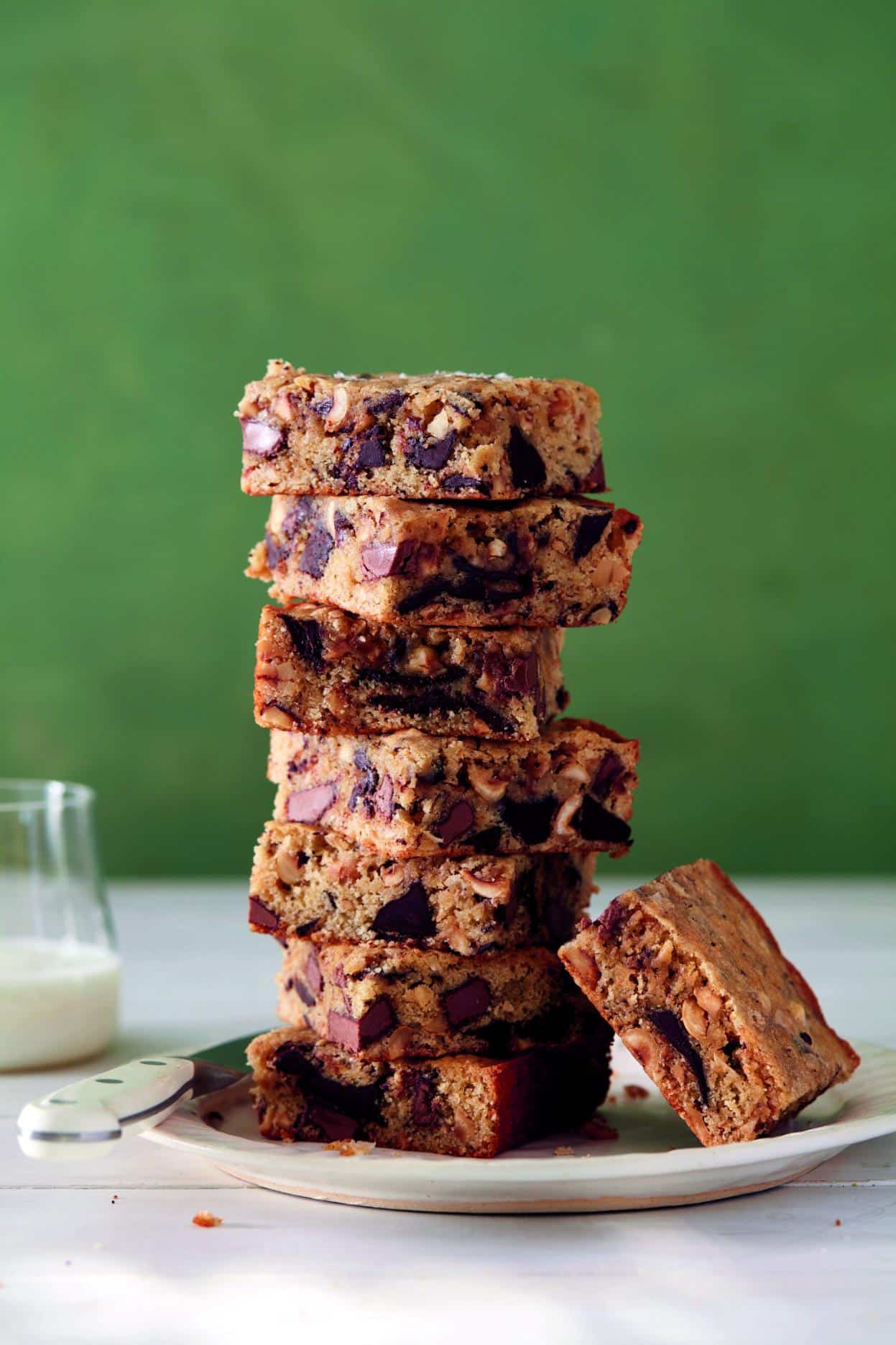South Korea, like many other East Asian countries, has a long history of tea culture. Korean teas are enjoyed not only for their taste, but also for their medicinal properties and healthful benefits.
Despite the popularity of coffee in Korea, tea is ingrained in the culture and remains a part of everyday life. Korean teas are considered a meal accompaniment, a home remedy for common ailments, and generally thought to uplift the mind, body, and spirit.
While green tea is commonly regarded as the staple tea in Korea, there are hundreds of varieties of tea here. These fall into five categories of “proper Korean tea:” fruit teas, flower teas, root teas, grain (& seed) teas, and traditional loose leaf teas.
These days you don’t even have to go to a tea house to get tea from Korea; many dining establishments carry an assortment of Korean teas or you can easily find the best teas in Korea online, thanks to stores like H-mart.
This article covers the best South Korean teas, ranging from Korean green tea and honey citron to toasted rice and jujube. But first let’s talk about how tea and the tea culture in Korea came about.
A traditional tea ceremony at a plantation in Boseong, Jeollanam-do, South Korea.
History of Tea in Korea
In the year 1905, tea was officially classified under the botanical name Camellia sinensis. All tea comes from this one tea tree, which actually originated in China. Korean tea culture began during the Three Kingdoms Period (18 BC – AD 660), when Chinese tea was imported into the country.
According to the Gaya Record, the legendary Queen Heo Hwang Ok received a Camellia sinensis Plant as a gift and planted it on Changwon’s Baegwolsan Mountain. Labrador tea and Fruit teas such as omija-cha (magnolia berry) and gugija-cha (goji berry) teas have been used since Early Korea (Samhan Era) and the Three Kingdoms Period.
According to the early chronicle-histories known as Samkuk-yusa and Samkuk-sagi, Queen Seondeok of Silla (ruled 632-47) drank green tea, and King Munmu ordered tea to be used during ceremonial offerings in 661.
In 828, King Hungdok obtained tea seeds from Tang China for planting, and King Sinmun later advocated the use of tea to purify the mind. Buddhist monks brought with them Chinese tea culture and began the systematic method of planting tea bushes throughout the country.
Korean tea was either whisked in a bowl (Sung Dynasty) or steeped in water in a pot (Ming Dynasty). Tea was the subject of some of Korea’s oldest recorded poems during the Koryo Kingdom (the 10th-13th centuries).
tea ceremony in South Korea
While Korean tea culture began earlier, in the Silla dynasty, it only lasted until the Koryo (Goryeo) Dynasty. Buddhist traditions and practices declined in the latter half of the Goryeo period due to corruption and the rise of strong anti-Buddhist sentiment.
Tea was drunk by royalty for leisure, and was used in ancestral and other ceremonial offerings. Over time, Buddhist traditions were replaced with Confusian ones. Ceremonial tea drinking almost vanished if it weren’t for scholars and the literati who continued with traditions of dasi (writing poems about tea) and dahoe (tea gatherings).
Korean tea culture was secularized during the Joseon Dynasty, as the royal family and aristocracy used Korean tea for ceremonies and rites. By the end of this period, Commoners had already adopted the practice of using tea for jesa (ancestral rites).
Korean Tea Ceremonies or Darye (“charye”) literally means tea etiquette or tea rite, and was synonymous with jesa. Similarly, there were regular honcha ceremonies in which cups of green tea were offered before the Buddha statues in temples.
The first modern Korean tea house was eventually established in 1924, as tea’s popularity waned. But, thanks to Choi Beom Sul, Korean tea and tea traditions regained interest in the ‘70s.
Tea, derived from Buddhist ritual offerings, was used in ancestral and national (Yeondeunghoe and Palgwanhoe) ceremonies. Choi Beom Sul, the Head Monk of Dasolsa Temple shared traditional tea etiquette which may have led to what we now know and practice regarding Korean tea traditions.
Modern Korean Tea Culture
Historically, tea drinking became ingrained in daily life, evolving from spiritual and royal traditions of Buddhist monks, the royal family, the nobility, and scholars. The manner of serving and drinking tea became an important part of family and guest etiquette.
Present day darye is less formal and more warm, aimed at offering friends a relaxing tea drinking and harmonious experience. Many restaurants serve grain tea (like brown rice or barley tea) instead of plain water to their guests, and at home, traditional teas made of various ingredients are commonly consumed both hot and cold.
Tea drinking is an experience that requires all five senses, in Korean culture. Korean tea is typically consumed with both hands holding the cup, but this is not always necessary. The first step is to examine the color of the tea, followed by smelling its fragrance.
The first sip is to taste the tea with the tongue, then experience the flavor in the throat, and finally, enjoy the lingering aftertaste in the mouth. Tea is said to combine various tastes in varying degrees of saltiness, sweetness, sourness, and bitterness, especially the infamous ‘5 flavor tea’ (omija).
OSulloc Green Tea Fields in Jeju, just before a rainstorm
The three Daryes or Korean traditional tea ceremonies:
Royal Darye – This Darye is conducted in silence, lasts for up to 8 hours, and is done in the presence of the king. However, the king doesn’t partake of the tea in case it is poisoned, so this type is mostly for show.
Seonbi Darye – This is another Darye that is performed in silence. It is for Korean Confucian scholars, usually composed solely of men. However, women can also participate in this tea ceremony, in modern times.
Friends Darye – This is the most relatable Darye, similar to common afternoon tea in the West. Unlike the previous two types, this Darye is a more casual experience that is best shared among family and friends.
Darye tea is typically served in beautiful pottery and elegant Korean tea cups. Traditional pottery is fired in kilns with porcelain, such as the beautiful Goryeo Celadon porcelain from Korea’s Goryeo Dynasty (918-1392).
Korean pottery artisans were so skilled that Japanese pottery was heavily improved by some of the country’s craftsmen having relocated to the neighboring East Asian nation in the 1500’s. Traditional Korean tea is chosen in consideration of body constitution and state of health.
It’s important to remember that not all Korean teas are sourced from the original tea tree, Camellia sinensis. Many popular picks are “tea” infusions or non-coffee beverages (whether hot or cold) crafted from flowers, roots, grains (or seeds), or fruits.
There are numerous flavors, blends, and herbs to choose from, and the best Korean tea brands offer a variety of options. The five types of proper Korean teas are leaf teas, grain (or seed) teas, flower teas, fruit teas, and root teas.
Let’s take a closer look at the best South Korean teas, at least according to domestic popularity.
an array of teas grown in Korea
Leaf Teas From Korea
Sollip-cha (솔잎차, Pine Needle Tea)
Average Cost: ₩
Where to Buy: Amazon
The pine needles from the Korean red pine are used to make this particular tea. This non-caffeinated tea also has a pine leaf version known as baegyeop-cha. Pine needles for Korean pine tea are harvested from 10 to 20 year old trees in the cool months, usually December.
Pine needle tea contains five times the amount of Vitamin C found in lemons, and can help with heart disease, varicose veins, skin complaints, and fatigue. This tea is also high in Vitamin A, which is good for eyesight, hair and skin regeneration, and red blood cell production.
Taoist priests drank pine needle tea because they believed it extended their lives, and there is actually evidence that it may help slow the aging process.
Nok-cha (녹차, Green Tea)
The first on our list is the most common of the Korean teas: green tea. Korean green tea is known locally as nok-cha – ‘nok’ meaning green and ‘cha’ meaning tea in traditional Hanja characters.
It contains less caffeine than coffee and is full of antioxidants that aids in weight loss, fight free-radicals and cancer, and lower the risk of heart disease. O’sulloc tea from Jeju is the ideal brand for enjoying high-quality Korean green tea.
It is more expensive than the other brands available in the market, but it is a globally recognized name for its advanced organic farming methods and production of high quality teas. Furthermore, green tea from the island of Jeju guarantees above-average flavor.
Jeju green teas in particular come in loose leaf, tea sticks, matcha powder, and tea bag varieties, all of which are made with tea grown on Korea’s Jeju Island.
a popular Korean green tea brand
Yeonnip-cha (연잎차, Lotus Leaf Tea)
The young leaves of the lotus plant are heat-treated by steaming or roasting, and then dried to make lotus leaf tea. This is a tea that has been enjoyed for thousands of years and has a ton of benefits for the body.
Lotus Leaf Tea contains numerous vitamins and minerals. In addition to promoting digestive and circulatory health, it contains antioxidants that fight free radicals.
lotus leaf tea from South Korea
Korean Fruit Teas
Daechu-cha (대추차, Jujube tea)
Average Cost: ₩₩
Where to Buy: Amazon
Daechu-cha is a South Korean tea made from jujubes or Chinese red dates. This tea can be made with dried jujubes boiled in water or with jujube preserves. Jujube preserves are simmered for 8 hours on low heat until they form a sweet syrup. This is later used to make the tea.
The herbal tonic is typically dark red or brown in color, and is highly regarded for its medicinal properties. Jujubes have been shown to have a calming effect on the brain and nervous system, which can aid in the relief of anxiety and insomnia.
It is high in flavonoids, iron, potassium, calcium, phosphorus, and vitamins B and C. Daechu-cha has a slightly tart and bitter taste with a bit of a sweet note at the end. It tends to come in packets, has a very powerful cinnamon taste to it, and is usually garnished with pine nuts.
Korean jujube tea
Omija-cha 오미자차 Five Flavors Tea
Average Cost: ₩₩
Where to Buy: Amazon
Omija is made from the delicious magnolia berry, also known as omija (schisandra chinensis). The Korean name, “five flavor fruit,” refers to the berry’s flavor, which includes sweetness, sourness, bitterness, saltiness, and spice notes.
The tea has a bright red color and can be served hot or cold. The beverage is said to be beneficial to the liver, throat, and larynx health, as well as helping to treat colds.
Korean five flavor tea (omija) and pomegranate tea
Seokryu-cha 석류차 Pomegranate Tea
Pomegranate tea is a vibrant red tea with a tart flavor. It’s made with crushed pomegranate seeds, boiled pomegranate flowers, or by combining tea with pomegranate juice concentrate.
Pomegranates are well-known super fruits that can aid in skin tightening, which is why older Korean women tend to drink this healthy tea. It also helps to build muscle, improve the immune system, lower cholesterol, and prevent heart disease.
It’s even said to be high in antioxidants, which help protect against certain types of cancer. This tea is available in stores, but pre-made versions are frequently mixed with mint, black tea, or green tea.
They can be sweetened as well, so choose teas that can be steeped for the best results, or reduce the sugar you add for a healthier cup. Take a look at this recipe.
cherry blossoms in Korean green tea
Korean Flower Teas
Gukhwa-cha 국화차 Chrysanthemum Tea
Average Cost: ₩₩
Where to Buy: Amazon
Gukhwacha, or chrysanthemum tea, is made by drying and preserving chrysanthemum flowers in honey for several weeks. After that, the flowers are steeped in hot water.
Chrysanthemum tea has experienced increased popularity recently, as it’s visually stunning, with the rehydrated flowers appearing to resurrect in a cup of bright yellow tea. This tea contains no caffeine and has a delicate, slightly sweet, floral flavor.
In Korean medicine, chrysanthemum tea was thought to help with varicose veins, colds, as an anti-inflammatory, and as a detoxifier. This popular Korean tea is said to cool down the liver when it becomes overheated as a result of chronic stress.
Korean ginseng tea
Traditional Root Teas
Insam-cha (인삼차, Ginseng Tea)
Korean ginseng tea is made from the all-healing herb ginseng. It has been used for centuries due to the numerous health benefits it provides. It is not only warm and comforting to drink, but is also regarded as a tonic with numerous nutritional properties.
Koreans drink it to boost their energy and immune systems, as well as to keep their hearts healthy and to reduce stress. While you can make ginseng tea at home by boiling Korean ginseng root over the stove, instant tea packs are widely available, and were always given to me by coworkers when I had a cold.
These granules contain a lot of Korean ginseng extract, which gives them a strongly bitter, earthy flavor and a wonderful aroma. Here’s a quick recipe for Korean ginseng tea: simply boil the root until the desired flavor is reached, and then pour the concoction in a cup. Add honey to balance the bitterness with sweetness.
tea from a cafe in Seoul
Korean Grain Teas
Boricha (보리차 Barley Tea)
Average Cost: ₩
Where to Buy: Amazon
Technically, barley tea is a tisane made with roasted barley grains and water. It can be steeped in either hot or cold water, and is commonly consumed after meals in Korean schools. Nowadays, it is often made by using teabags consisting of both roasted and ground barley.
Aside from Korea, the herbal infusion has ancient origins, and is enjoyed in many Asian countries such as Japan and China. Weight loss, blood sugar regulation, relief from digestive problems, and even improved male fertility are all widely believed to be health benefits.
Instead of water, even in many homes and restaurants they serve cold barley tea. With so many health benefits, you can also switch your water routine at home with this barley tea recipe using roasted barley grains.
barley tea
Yulmu-cha, 율무차, or Job’s Tears or Coix Seed
Yulmu-cha is a Korean tea made from the seeds of the yulmu plant. Named after the character from the Bible, Job, yulmu-cha is also called Job’s tears or Coix. The plant’s yulmu seeds are harvested to make the tea.
Making the tea involves roasting the seeds and grinding them into a powder. It is then dissolved in warm water. The tea is transparent and creamy, with a distinct nutty flavor. It has a thick consistency, and the soupy tea works great against inflammation and congestion.
Other seeds, grains, or nuts like walnuts can be added to yulmu powder, if desired. This South Korean tea is typically sold as a pre-packaged powdered mix or from vending machines across Korea.
job’s tears tea
Hyeonmi-cha, 현미녹차, or Brown Rice Tea
Average Cost: ₩
Where to Buy: Amazon
Hyeonmi-cha, also known as Brown Rice Tea, has a strong aromatic scent. It is classified as a blended tea, usually with green tea (hyeonmi-nokcha). This tisane is made by roasting rice in a pot and then covering it with boiling water.
Tea should be available in tea bags or roasted form at Asian grocery stores in your area. In addition to the antioxidants found in green tea, Korean brown rice tea is high in vitamins.
B vitamins, vitamin E, protein, and other nutrients that aid in fatigue and recovery, immunity and the prevention of colds, food poisoning, tooth decay, “gum disease,” and bad breath. This tea is also beneficial for lowering cholesterol, and has a diuretic effect.
brown rice tea
Best Medicinal Korean Teas
Ssanghwa-cha (쌍화차, Double Harmony Tea)
Ssanghwa-cha is a traditional Korean tea with a deep brown color and a distinct flavor. This popular medicinal tea is also known as Double Harmony Tea.
Angelica root, Cnidium Officinale Makino, Licorice Root, Medicinal Jujube, Rehmannia Glutinosa, Astragalus Root, Ginger, and Cinnamon are among the herbs used. It has a plethora of health benefits that can be obtained simply by adding it to your morning routine.
The strong herbal medicine flavor of Ssanghwa Tea is followed by a slightly bitter aftertaste. The sesame seeds give it an earthy and nutty flavor to balance this out, with a layer of cinnamon and sweetness from the jujubes.
During the Joseon Dynasty, it was considered an herbal bath and was consumed in the morning and at night (1392-1910). Many Koreans buy this pre-made tea, but there are still places in the country that serve freshly-made versions.
Boseong green tea balls, freshly-pressed
Sipjeondaebotang
Average Cost: ₩₩
Where to Buy: Amazon
In East Asian countries, Sipjeondaebotang has been used as a medicinal tea for centuries. It is more potent than ssangwa-cha because it contains a total of ten medicinal herbs that when blended, completely protect the body.
Ginseng, angelica root, kneeling angelica, peony, milk vetch root, cinnamon, white atractylodes, deer antler, Helen, and foxglove are among the ten ingredients. The ingredients are boiled for an extended period of time with ginger and jujubes, yielding a potent tonic.
Sipjeondaebotang means “wholly and dearly protect and preserve everything” and literally means “harmony of both energy and blood”. The infusion is widely used to alleviate fatigue, reduce inflammation, and improve liver function.
Its energizing properties make it an excellent supplement for those recovering from the flu and for boosting the immune system.
yuzu tea in a jar
Best Jarred Korean Teas
Yujacha, 유자차, or Citron Tea
We’re saving our favorite Korean tea for last. If you’ve been interested in Hallyu, you’re probably familiar with this bottled tea. Well-known across the globe, yujacha is a sweet tea made from yuja, or Korean citron (yuzu).
Yuja is a variety of citrus fruit with a bright, sweet lemon flavor and a slightly bitter undertone. It’s three times richer in vitamin C than lemons. This tea is thought to have numerous health benefits, including relief from cough and the common cold, indigestion, and inflammation and headaches.
It has antibiotic properties and can help aid circulation and digestion. Citron Tea is made by mixing yuja marmalade with hot water. Yujacha or citron tea can be stored for up to two years, so with covid-19 resurfacing or if you’re just looking to battle flu season, you can certainly make this tonic at home.
It’s a soothing and powerful beverage to drink when you have a sore throat or cough. Check out this easy recipe to always keep this power tonic in the fridge for a “rainy day.” To make the marmalade itself at home, mix thinly-sliced yuja with honey and sugar and let it sit for three to four months.
Saenggang-cha 생강차 Ginger Tea
Ginger tea is made from ginger root and honey. This South Korean tea is thought to warm the body (a perfect remedy for those cold winter blues) and alleviate fatigue symptoms, usually coming sweetened in packets.
It also aids in the treatment of diarrhea, stomachaches, and low body temperature by neutralizing toxicity in the body. Ginger tea comes in a variety of flavors, including the little packets, which are popular in South Korea. It’s made with honey and freshly grated ginger, which is granulated for easy dissolving.
The combination is saved and can then simply be mixed with water. Lemon or starch is also used in some variations. In Korea the beverage is popular as a health tonic and a mid-winter pick-me-up, and can be prepared as a hot or cold beverage.









